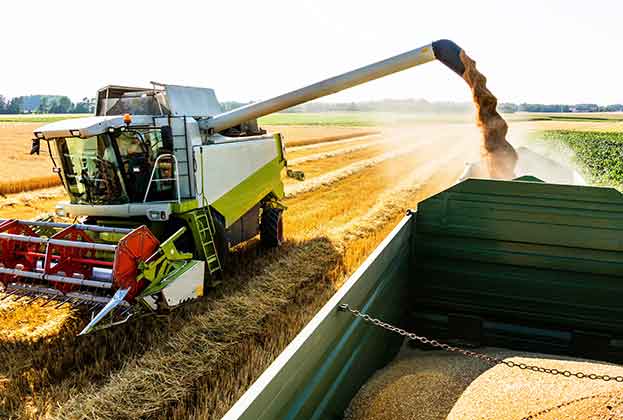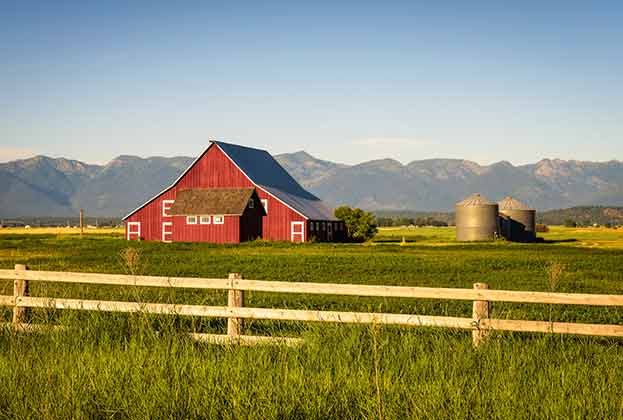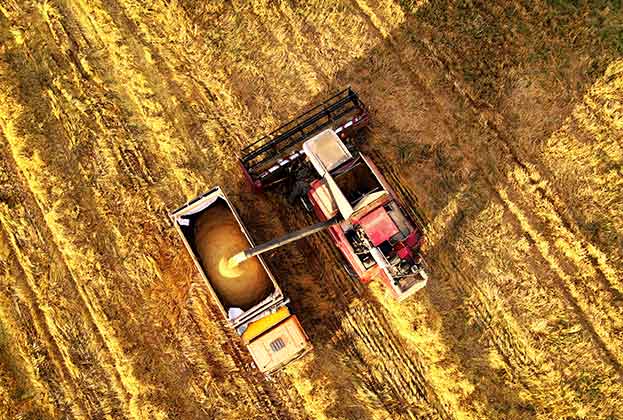Investors turn away from traditional areas of the world as they look to build scale in southern Europe
Historically Europe has seen less institutional activity than the more mature farmland markets of the US and Australia. Partially this is due to history: the farm sector has been more fragmented, and the Common Agricultural Policy (CAP) has distorted values, returns and transaction rates. In many countries, it has been difficult to achieve scale.
The first wave of institutionalisation of farmland markets began in earnest with the accession talks with the Central and Eastern European (CEE) countries to the European Union in the early 2000s. Markets such as Poland, the Baltic States and Romania, in particular, have seen significant capital inflows over the last 20 years, with price convergence between the old EU-15 and the newer EU member states over the last decade.
In the last five years, we have seen the institutionalisation trend spread to southern Europe. The recent global interest in permanent crops has shone a spotlight on southern European countries, with a particular focus on Spain and Portugal. Investors looking for diversification away from traditional areas such as California are now beginning to deploy at scale in these newer European markets.
Central and Eastern Europe
There are significant areas of high-quality farmland in CEE supporting a range of farming enterprises: many countries in the region are large producers of cereals and oilseeds in particular. There has been significant land price growth over the last decade, with average prices across the major Central European markets increasing almost 300% from €2,100 per hectare in 2011 to €6,300 per hectare in 2021. Particular strong performers have been the two largest markets of Poland and Romania.
.jpg)
Challenges of interpreting land price data in CEE
Despite it being 30 years since the fall of communism, land still remains fragmented in many areas of some CEE countries, such as Romania. Savills research shows huge price variations between individual arable plots in the cheaper regions of the north east, where values may be €2,000–€2,500/ha, compared to consolidated arable land in the more fashionable and developed regions such as Timisoara, which may be €10,000–€12,000/ha. Published land transaction data may be distorted by smaller sales as well, since many larger transactions often take place in corporate structures as share transactions.
CASE STUDY: THE NETHERLANDS
The Netherlands is renowned for being one of the leading agricultural and horticultural producers in the EU. After the US, it is the biggest exporter of agricultural produce in the world, exporting €65 billion of agricultural produce annually, representing 17.5% of total Dutch exports.
Many of the characteristics of the farmland market here are similar to other Western European nations: a shortage of supply, low transaction rates (c. 1.5%) and a premium attributed to the most flexible soils that can produce a wide range of high-value crops. The Netherlands has the EU’s highest density of livestock, but this is under threat from environmental reforms (see below).
Savills research shows average farmland prices in the Netherlands in 2021 were around €70,000 per hectare, making it some of the most expensive land in the EU; average rents were over €800 per hectare. The most sought-after and productive region, Flevoland, had capital values in excess of €100,000 per hectare and rents in excess of €1500 per hectare.
ASR DUTCH FARMLAND FUND
The ASR Dutch Farmland Fund invests in farmland in the Netherlands. The Fund leases out land to farmers with ultra-long lease periods, providing stable returns and low volatility. The €1.7 billion Fund owns 36,426 hectares of Dutch Farmland and targets an IRR of 4% with a direct target return of 2%.
IMPACT OF DUTCH AGRICULTURAL REFORM
According to Politico, Dutch farmer protests began in 2019 after a court ruled the government’s strategy for reducing excess nitrogen breached EU laws. In June 2022, the government presented plans to cut nitrogen and ammonia emissions by 50% by 2030 to preserve EU-protected Natura 2000 areas. It knows this will not be easy, saying it sees three options for farmers: “Becoming more sustainable, relocating or ending their business”. The impact of this on Dutch farmland markets is that supply is likely to increase if there is significant industry restructuring. This may present opportunities for investors who have been unable to access the market so far due to low transaction levels.
Southern Europe: the new permanent crop frontier
The region offers a diverse range of opportunities
After many decades of interest in California and subsequently Latin America, investors looking for diversification in their permanent crop portfolios have begun to target Iberia. Spain and Portugal have a wide climatic range and can produce crops including nuts, citrus, olives and tree fruit.
Water availability makes a critical difference to asset viability. As with all irrigated crop opportunities, detailed asset-level due diligence on water rights is critical. Spain has 3.8 million hectares of irrigated land alone, and there has been substantial investment in reservoir storage capacity in Portugal.
After many decades of interest in California and subsequently Latin America, investors looking for diversification in their permanent crop portfolios have begun to target Iberia
Nicola Buckingham, Director, Rural Research
The region presents a number of diverse opportunities depending on the investor profile: the opportunity to acquire existing high-performing assets; the opportunity to redevelop and institutionalise existing enterprises (e.g. the replacement of traditional olive oil orchards with superhigh density mechanised orchards), or the opportunity to develop greenfield sites. Land prices are rising, but development costs for most enterprises remain below those of California.
.jpg)
Two key opportunities:
- Olive oil production. The EU is the largest producer of olive oil in the world, accounting for around two-thirds of global production. Most of the world’s production comes from southern Europe, northern Africa and the Middle East, as 95% of the olive trees in the world are cultivated in the Mediterranean region. Spain is by far the largest producer of olives for olive oil in the EU; production levels in Portugal are much smaller but it is known for the quantity of higher-grade virgin olive oil it produces.
- Tree nut production. The European Union is one of the world’s leading producers and consumers of almonds, with production concentrated in Spain. In 2020, the USDA estimated the total area in Spain planted with almond trees was about 720,000 hectares, of which just under 120,000 hectares was irrigated production. The productive area is increasing owing to the large number of intensive and super-intensive almond orchards planted in recent years that have started to enter production. Production volumes remain significantly below demand: total EU production is just 30% of total EU demand, and the vast majority of the deficit is imported from California.
Read the articles within Global Farmland Spotlight below.
.jpg)


